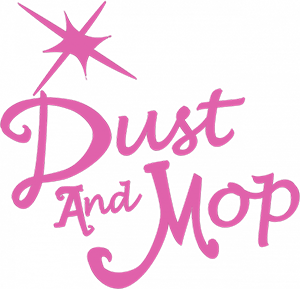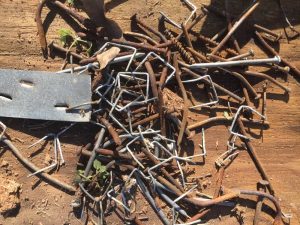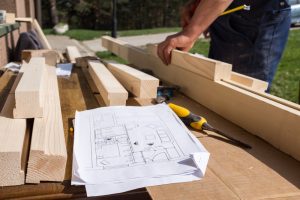How To Clean Up Your Home After DIY Projects
It goes without saying that each DIY project will leave you not just with an improved home, but with dust and debris as well.
Being aware of the tools and various techniques in clearing out your project’s clutter can make a difference in making your post DIY cleaning a success.
Below are some tips that should prove useful when cleaning up after a DIY project.
What Equipment Do You Need?
Cleaning up the mess after each DIY project takes a lot of motivation, effort, and “elbow grease”. Getting the right equipment then should make tidying up easier and more efficient.
Some of the essential tools that you need for these types of jobs include:
- HEPA-Equipped Vacuum Cleaner – you should try to use a vacuum cleaner that is equipped with HEPA filters as they can collect dust particles more efficiently compared to non-HEPA vacuum cleaners.
- Masks – wearing a mask is especially important if your DIY project includes activities that produce dust from bricks and concrete (e.g. drilling bricks, crushing stones). These construction materials present a serious health hazard when pulverized because they contain crystalline silica. When inhaled, crystalline silica can cause respiratory diseases or even lung cancer.
- Metal Scraper – to scrape off paint splatters. You may also opt for a plastic scraper for scratch-prone surfaces.
- Microfiber Cloths – to wipe away spills from materials such as paints and lubricating oils.
- Paint Thinner – for getting rid of oil-based paints if you’re using them in your project.
How to Clean Up Construction Dust?
Construction dust is created when materials such as concrete, glass, and wood are broken down through drilling, grinding, and sawing.
It’s important to know that dust from both masonry and wood materials is harmful when inhaled so wearing a mask should be a priority.
You should use a vacuum cleaner with stronger suction power since concrete dust is denser than regular dust.
The Occupational Safety and Health Administration (OSHA) recommends the use of HEPA-equipped vacuum cleaners when cleaning construction dust because of their ability to collect 99.97% of dust and trap particles down to the size of 0.3 microns. This lowers your exposure to crystalline silica to a great extent since a crystalline silica’s median particle size is between 8.86 and 9.59 microns.
OSHA also discourages dry sweeping as it heightens your exposure to harmful particles by sending the dust into the air.
You should leave your project area for at least four hours before cleaning the dust off. This will let airborne particles settle down on surfaces, making it easier for you to clean them all at once. Failure to wait before sweeping up dust will just see dust in the air settle after cleaning, meaning that you will need to sweep the area again.
How to Clean Up Spilled Paints?
Cleaning up spilled paint will depend on the type of paint that you’re using– whether it’s water-based (i.e. latex, acrylic) or oil-based (i.e. alkyd).
It will also depend on the type of surface the paint spilled on. Here are a couple of examples:
1. Tile
You can wipe off the paint with a microfiber cloth if it’s still wet. This applies to both
water- and oil-based paints.
If the paint has already dried up, you can do the following:
-
For water-based paint
You can scrape off the paint with a metal or a plastic scraper. Just make sure that you won’t scratch the tile in the process.
If the paint is too flat, you can soak it with rubbing alcohol or a nail polish remover for a few minutes, then scrub it off with a rag.
-
For oil-based paint
Soak it with paint thinner and wipe it with a microfiber cloth when the paint has softened.
2. Hardwood
-
For water-based paint
Soak the paint with lemon juice until it softens. Scrub it off or scrap it up afterward. Depending on how much the water-based paint has set on your hardwood floor, you may be able to remove paint splatter without damaging its finish.
-
For oil-based paint
You can try softening the paint with a hairdryer on low heat, then scrub what is left once it has softened.
If the hair dryer method doesn’t remove the paint completely, you may need to use a paint thinner. However, this will remove your hardwood floor’s finish as well. You can sand off any excess paint and restain your floor in this case.
Aside from removing spilled paints on surfaces, it’s also a good idea to clean your paint brushes so you can use them again in future projects. Here’s how you can clean used brushes:
3. For water-based paint
The best way to remove water-based paint from a brush is to wash them immediately with warm water and remove excess paint with a wire brush. Repeat the process until all the paint is gone.
If the paint has already dried up, add some mineral turpentine to the mixture and let it soak for a few minutes. Once the paint has softened, wash it with soap, and let it dry.
4. For oil-based paint
Fill a small bucket with five centimeters of mineral turpentine and work your way around the brush. Clean any excess paint with a wire brush and wash it with soap and warm water. Rinse and repeat.
How to Dispose of DIY Waste?
Proper disposal of your DIY waste is an integral part of cleaning up as it impacts the environment. Therefore, you should be aware of the rules and regulations regarding waste disposal in your area.
You should also keep materials that can still be used in other DIY projects whenever possible. This is especially the case with unrecyclable materials that will end up in landfills such as oil-based paint and treated wood.
Another option is to give them to charities that may benefit from second hand construction materials.
Undamaged materials like bricks, glasses, and tiles can be sold online through Facebook Marketplace or Craigslist. You may also reach out to local contractors that may be interested in buying these materials off your hand.
Conclusion
Having the right tools and knowing the different methods in cleaning up the mess after a DIY project is not just important for your health and safety, but for the conservation of the environment as well.
Some cleaning equipment do not come cheap though. It might be more economical to hire a professional cleaning company if you only do DIY projects once or twice a year.
This article was contributed by Volodymyr Barabakh from Fortress Home.








